Healthy Soil for a Wealthy Tomorrow
 Print This Post
Print This Post
By Elise Haschke, Climate Smart Agriculture Coordinator, and Darron Gaus, NCAT Agriculture Specialist
Christine Martin, owner of The Regen Ranch, was pleasantly surprised to discover high-value Eastern gamagrass on her pastures this summer. “I found it and couldn’t believe it. The animals activated the dormant seed stock in the soil and germinated the buried seeds.” Christine eliminated synthetic inputs on the native pastures and is managing for herd density and high animal impact through holistic planned grazing. In addition to growing superior forage grasses, she is also witnessing the land’s ability to rebound from climate disruptions. “In this year of less than average rainfall, my grazing and recovery practices have given me green and growing pastures, as well as spurts of recovery after a grazing.” Despite drier conditions above-ground, the roots are finding moisture below-ground. This enhanced soil fertility is a direct result of the soil- health practices Christine has incorporated on the ranch to minimize soil disturbance, maintain living roots, keep the soil covered, restore diverse native plant communities, and integrate livestock.
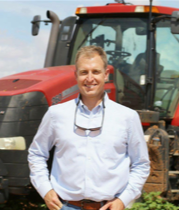
Jeremy Brown, Broadview Agriculture Inc.
Jeremy Brown, a fourth-generation cotton farmer in the Texas panhandle, focuses on NRCS’s five soil health principles and uses common-sense practices, including cover cropping, to increase financial prosperity, decrease health stressors, and increase nutrient density in his soils. He attributes a 10-year gap, during which he was invested in off-farm careers and activities, to his ability to think of agriculture in a new way. He credits his faith in becoming a great steward of the 4,500 acres in his operation. Jeremy currently farms 3,500 acres organically and thinks of his soil in a completely different way after meeting soil health pioneers like Gabe Brown and Ray Archuleta. Jeremy knows there is no perfect system, saying “You can’t put creation in a box.” With only 1.5 inches of rainfall in a one-year period, he remains confident that his land will be more resilient than conventional cotton growers in his area.
This is soil wealth – building soil health to advance societal wealth. For agricultural producers, adopting practices that enrich soil organic matter is like making deposits into the soil bank, which accrues compounding interest over time and pays the dividends of fertility, productivity, and resilience to extreme weather conditions. Beyond economic benefits, soil wealth is the accumulation of beneficial physical, biological and chemical soil qualities that improve water quality, enhance biodiversity and wildlife habitat, and buffer against food production losses and supply disruptions due to climate change. Another way to think about soil wealth is as a state of collective abundance and prosperity that strengthens local communities and nourishes healthy bodies. Notably, a higher percentage of producers who incorporate soil-health practices report an improved quality of life as compared to conventional-practice producers (Nebraska, 2020).

Healthy soil. Source: USDA NRCS
In Texas, the National Center for Appropriate Technology (NCAT) is organizing a Texas Soil Wealth Alliance (TSWA) to accelerate the adoption of soil-health practices on agricultural lands to ultimately scale soil wealth statewide. The TSWA is centered on producer voices and consists of multi-disciplinary members who represent Texas’s rich geographic, cultural, and ideological diversity. Drawing inspiration from Nebraska’s 2020 report Soil Health for Nebraska Wealth, the TSWA is moving towards developing a report for Texas that will include recommended targets and strategic actions to achieve our shared goals to:
- Improve soil health and carbon accrual in Texas agricultural lands;
- Perpetuate economic viability for Texas ag producers for generations to come;
- Enhance farm and ranch resilience to extreme weather conditions;
- Conserve wildlife habitat, biological diversity, and natural resources; and
- Ensure a secure and nutritious food supply for all Texans.
With 86% of the land in Texas in agricultural production and the Texas food and fiber sector totaling $100 billion annually, it is important that Texas agricultural producers look towards keeping soils healthy to building collective wealth and prosperity. As dire conditions continue to intensify due to a changing climate, it is pivotal for agricultural producers to adopt practices and appropriate technologies for an evolving perspective on taking care of the ground beneath our feet. The TSWA will continue to elevate stories like Christine’s and Jeremy’s to bolster the resilience of Texas agriculture across all regions and sectors, and looks forward to spreading the message nationwide.
What does soil wealth mean to you? What climate impacts and soil health-related resilience have you observed on your farm or ranch? We’d love to hear from you, especially if you’re reading this in Texas. Email us at southwestregionaloffice@ncat.org to share your experience building healthy soil for a wealthy tomorrow.
Related ATTRA Resources:
Managing Soils for Water: How Five Principles of Soil Health Support Water Infiltration and Storage
Building Healthy Pasture Soils
Agriculture, Climate Disruption, and Carbon Sequestration
Other Resources:
A New Generation of Farming: Healing the Land Through Soil Health Principles
This blog is produced by the National Center for Appropriate Technology through the ATTRA Sustainable Agriculture program, under a cooperative agreement with USDA Rural Development. ATTRA.NCAT.ORG.

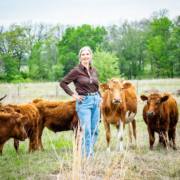

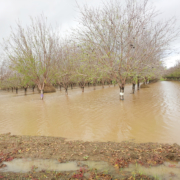
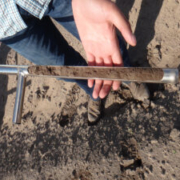
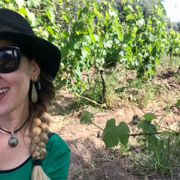
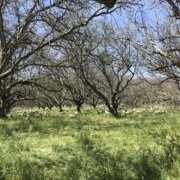
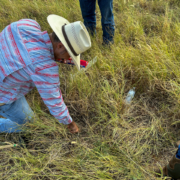
 Canva Pro
Canva Pro


